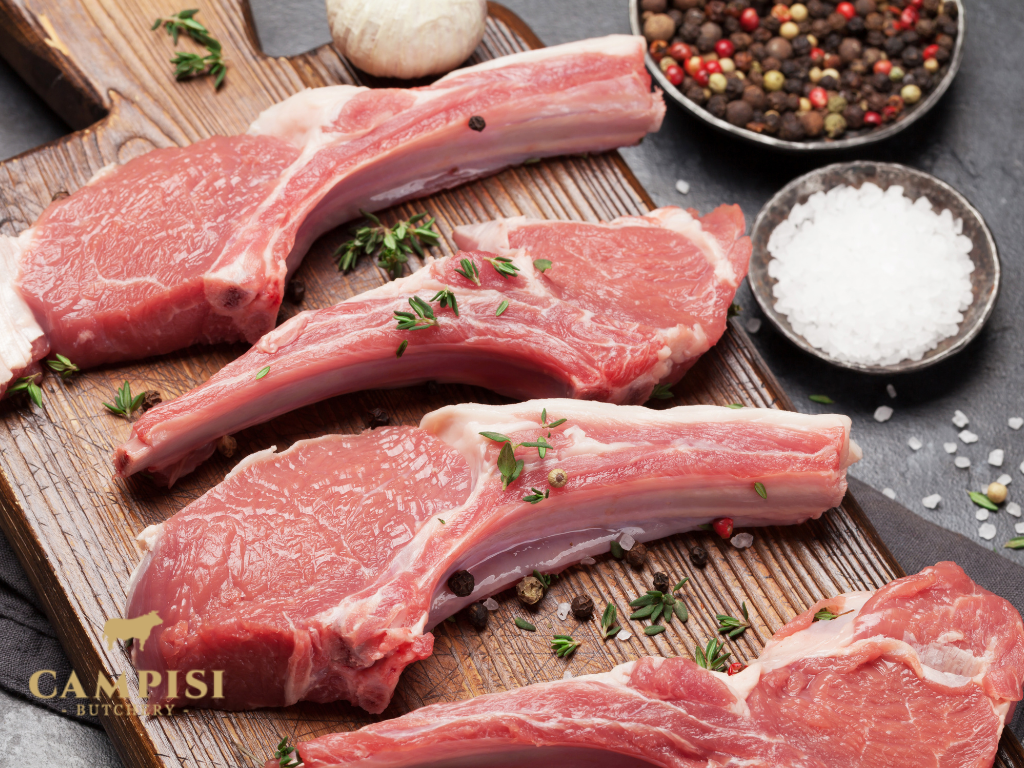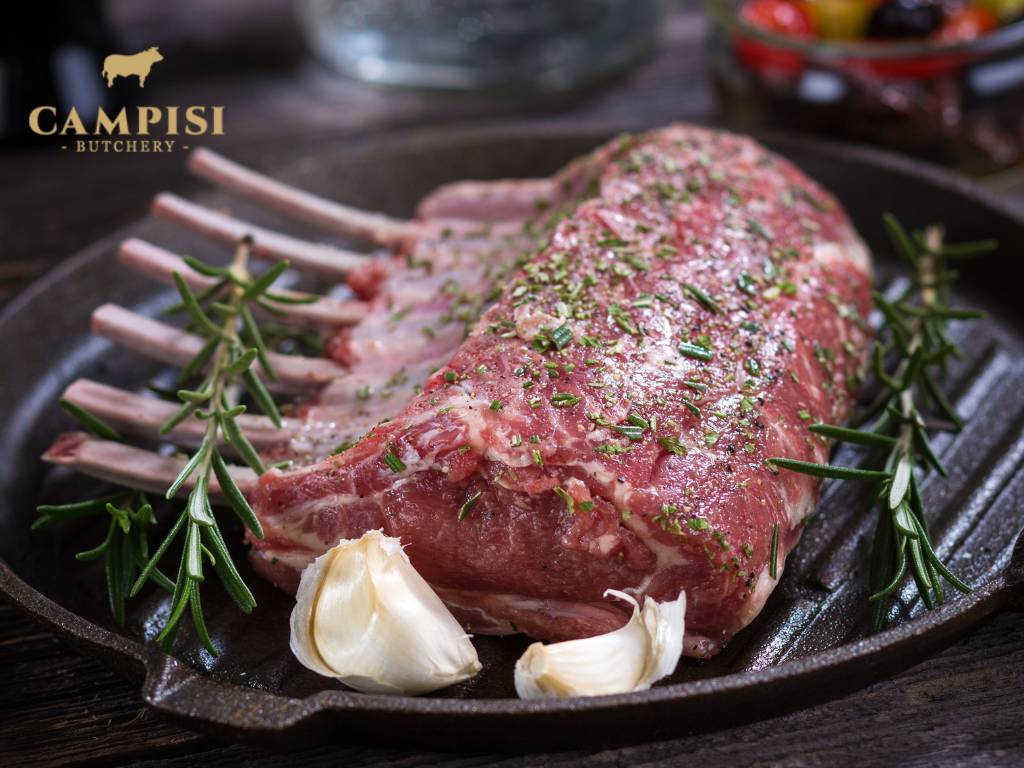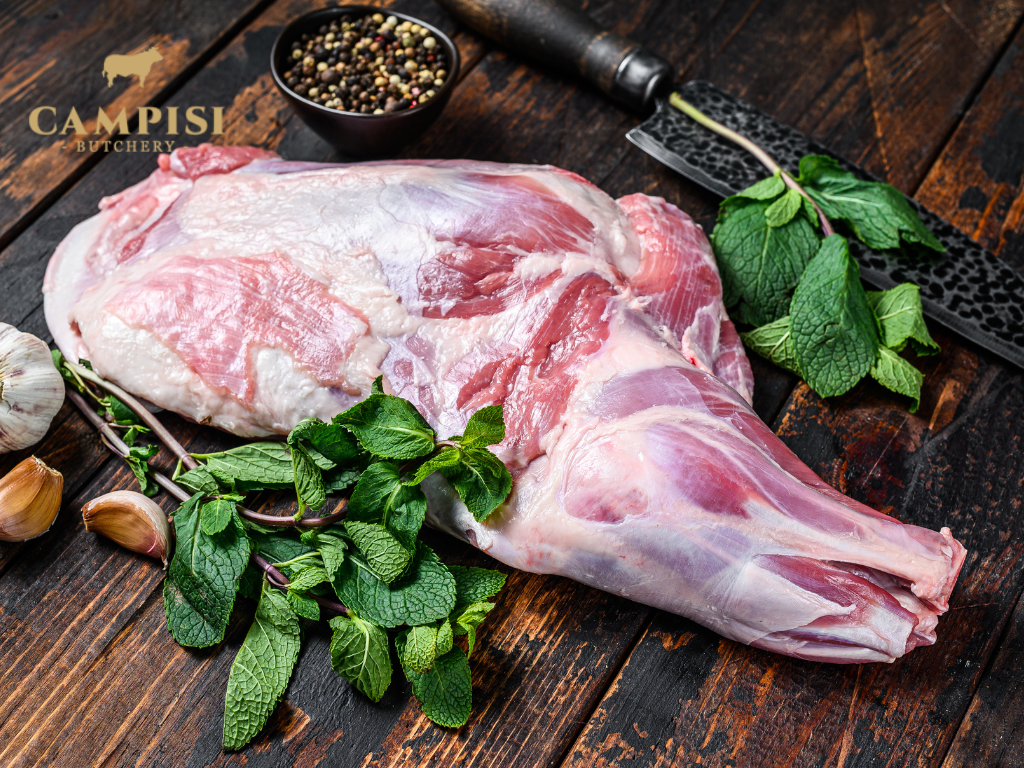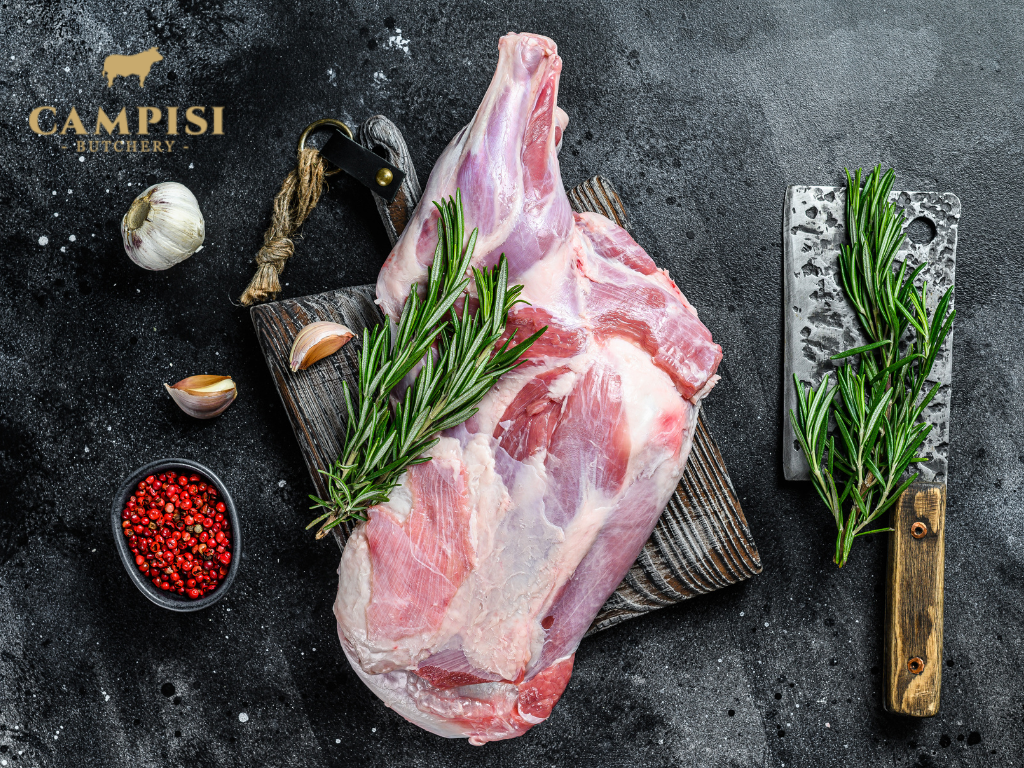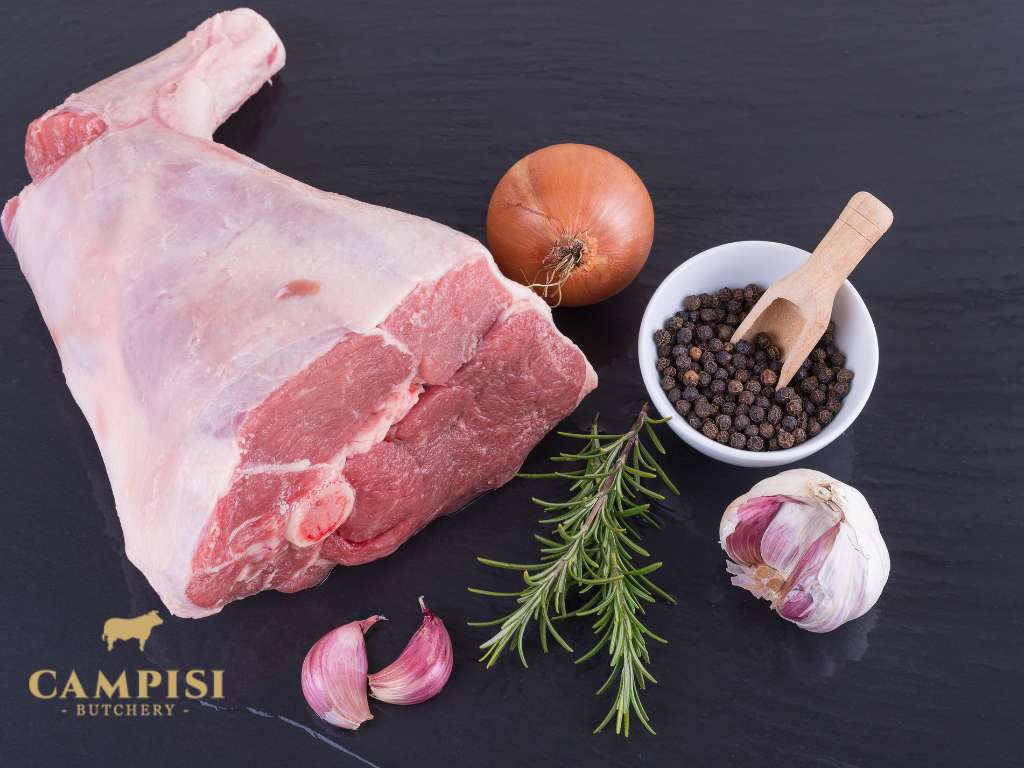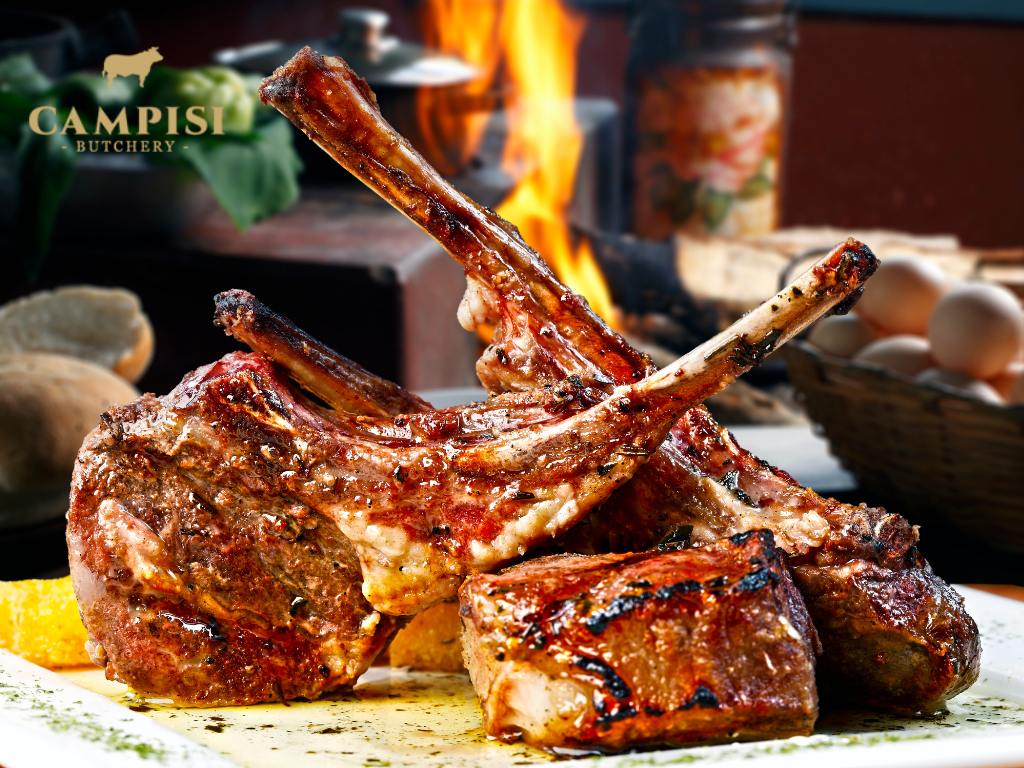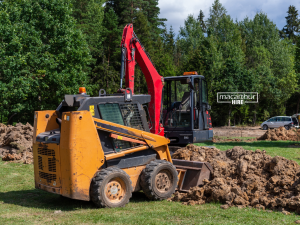Preparing a leg of lamb for roasting is an art that combines traditional techniques with personal touches to maximize the meat’s natural flavors and tenderness. Proper preparation sets the foundation for a roast that’s not only succulent and flavorful but also a centerpiece that draws everyone to the table.
Preparing the Lamb for Roasting
Inspecting the Meat
Start with a thorough inspection of the leg of lamb. Look for a fresh, pinkish-red color and a firm texture. The fat should be white and not too thick. This initial examination ensures you’re working with a quality cut that’s fresh and ready for roasting.
Trimming Excess Fat
While some fat is essential for flavor and juiciness, too much can overwhelm the taste. Carefully trim the excess fat, leaving about a quarter-inch layer to melt over the meat as it cooks, basting it in flavor. Use a sharp knife for precision, and remember, the goal is balance; too little fat, and the roast may dry out.
Tying the Roast
Tying the leg of lamb helps maintain its shape during roasting, ensuring even cooking and making it easier to carve. Use kitchen twine to tie the roast at two-inch intervals snugly but not too tight. If working with a boneless leg, roll it into an even shape before tying to keep the thickness consistent throughout.
Marinating the Lamb
Benefits of Marinating
Marinating the lamb not only infuses it with flavors but also tenderizes the meat, breaking down the fibers to ensure a melt-in-your-mouth texture. The acid in marinades, such as lemon juice or vinegar, is key to this process.
Choosing a Marinade
Select a marinade that complements lamb’s rich flavor. Traditional options might include olive oil, garlic, rosemary, and thyme, while more innovative choices could explore spices like cumin or a hint of mint. Consider the overall flavor profile you desire, and don’t be afraid to experiment.
Marinating Timeframes
For the best results, marinate the lamb for at least 4 hours, though overnight is ideal. This gives enough time for the flavors to penetrate deeply. Remember to turn the meat occasionally, ensuring every part benefits from the marinade.
Room Temperature Resting
The Importance of Resting Before Roasting
Allowing your leg of lamb to rest at room temperature before roasting is a step that shouldn’t be overlooked. This practice brings the meat closer to room temperature, promoting more even cooking once it enters the oven. Cold meat placed directly into a hot oven can cook unevenly, with the outer parts becoming overdone before the center has had a chance to properly warm up and cook through. A leg of lamb left to rest outside the refrigerator for about one hour before cooking can significantly enhance the tenderness and juiciness of the final roast.
Scoring the Meat
Technique and Benefits
Scoring the surface of the leg of lamb involves making shallow cuts across the fat layer. This technique has several benefits that contribute to the roast’s overall flavor and texture:
- Improved Marinade Penetration: The cuts allow the marinade to seep deeper into the meat, ensuring the flavors are not just on the surface but are infused throughout the lamb.
- Enhanced Rendering: Scoring helps the fat to render more effectively during roasting, contributing to a crispier, more flavorful outer layer that complements the tender meat inside.
- Attractive Presentation: Beyond its practical benefits, scoring adds a visually appealing pattern that enhances the roast’s presentation.
To score the lamb, use a sharp knife and make shallow cuts about a quarter-inch deep, creating a diamond or crisscross pattern across the fat layer. Be careful not to cut too deeply into the meat itself; the goal is to penetrate the fat just enough to aid in rendering and marinade absorption.
Applying Rubs and Seasonings
Selection of Herbs and Spices
The right selection of herbs and spices can elevate the natural flavors of a leg of lamb, creating a memorable and savory dish. Lamb pairs beautifully with a range of seasonings:
- Rosemary and Thyme: Classic herbs that offer a woodsy aroma and earthy taste.
- Garlic: Adds depth and pungency, enhancing the meat’s rich flavors.
- Mint: Provides a refreshing contrast to the richness of the lamb.
- Cumin and Coriander: Offer a warm, slightly spicy edge, perfect for a more exotic profile.
- Salt and Black Pepper: Fundamental for enhancing all the flavors and ensuring the lamb is well-seasoned.
Applying the Rub
To ensure your seasonings penetrate the meat and contribute to a delicious crust:
- Prepare the Rub: Mix your chosen dry herbs and spices in a bowl. If using garlic or other wet ingredients, mash them into a paste.
- Score the Lamb: As previously mentioned, scoring the fat layer of the lamb can enhance rub penetration and flavor infusion.
- Even Application: Rub the seasoning mix all over the lamb, pressing it into the scored cuts and ensuring even coverage. For the best results, use your hands to massage the rub into the meat, covering every surface.
- Rest Before Roasting: Allow the seasoned lamb to sit for a short period before roasting. This resting time lets the flavors meld and penetrate deeper into the meat.
Conclusion
By following these preparation steps, you’ve set a solid foundation for a leg of lamb roast that promises to be succulent, flavorful, and perfectly cooked. From inspecting and trimming the meat to applying a thoughtful blend of rubs and seasonings, each stage has been geared towards enhancing the lamb’s inherent qualities. Remember to let the lamb rest at room temperature before roasting and to consider the internal temperature as you aim for your desired level of doneness.


